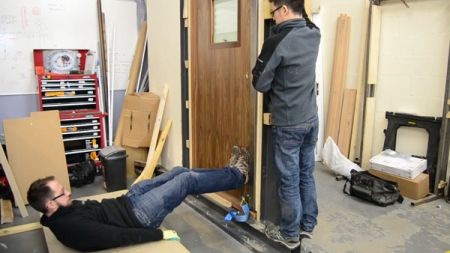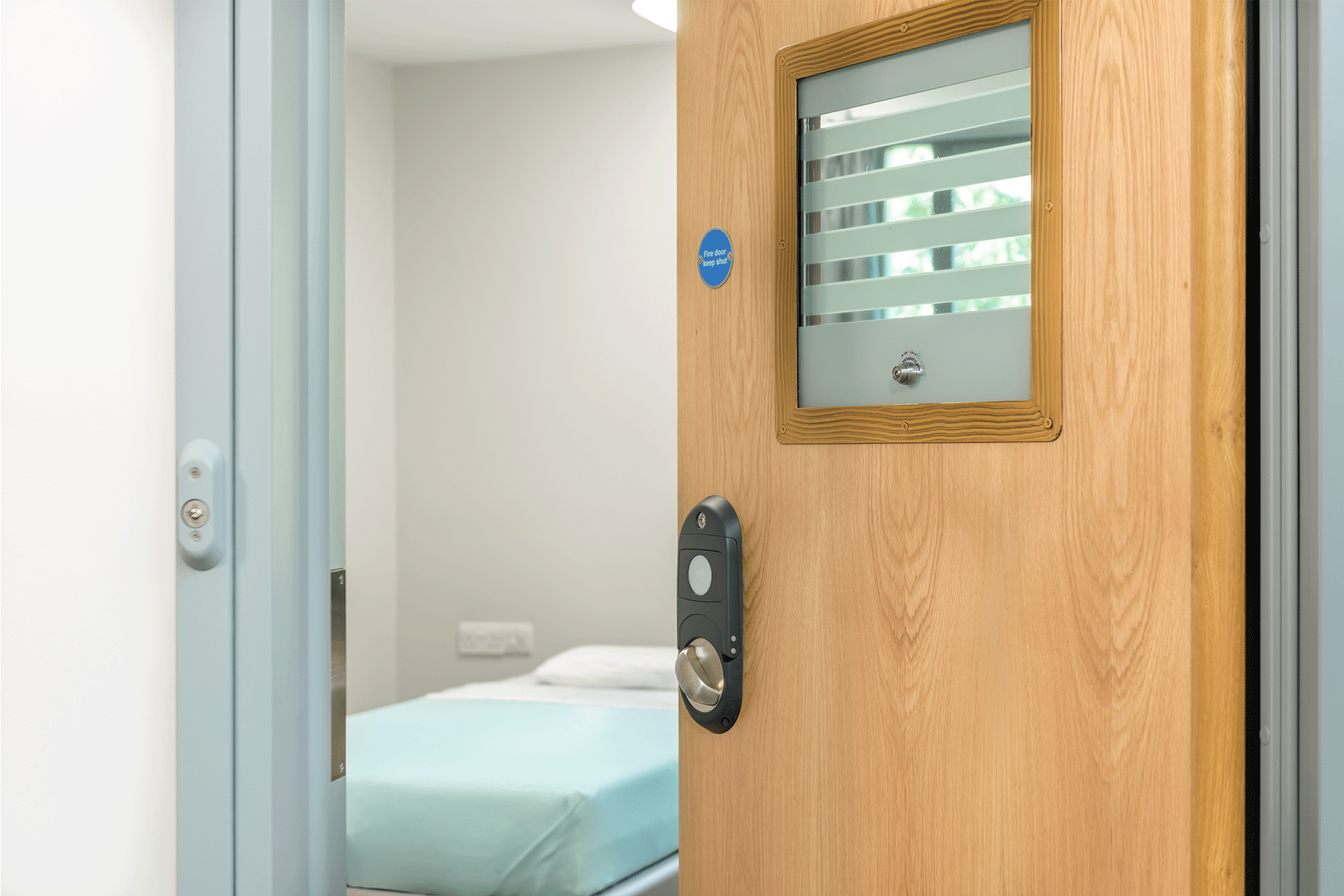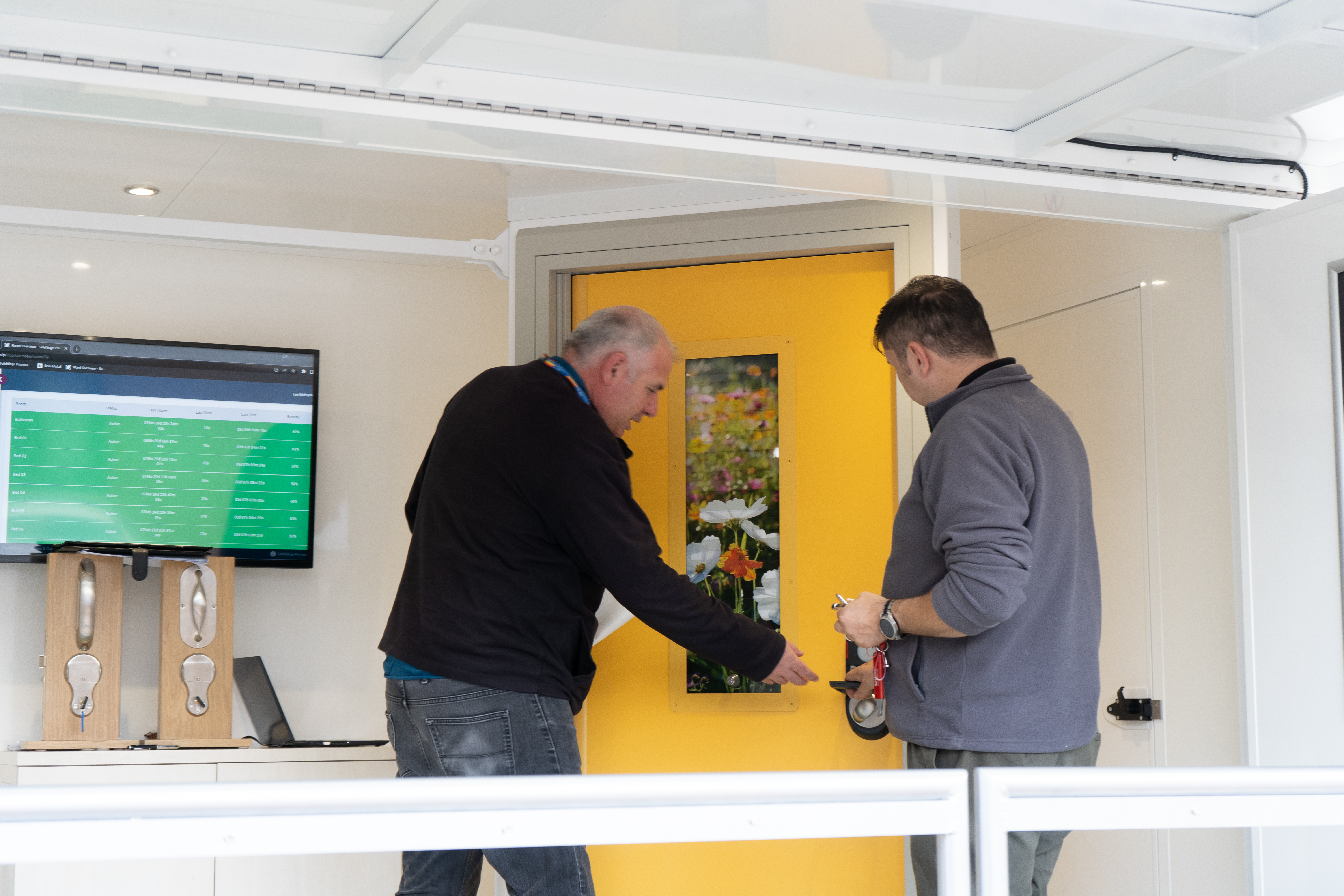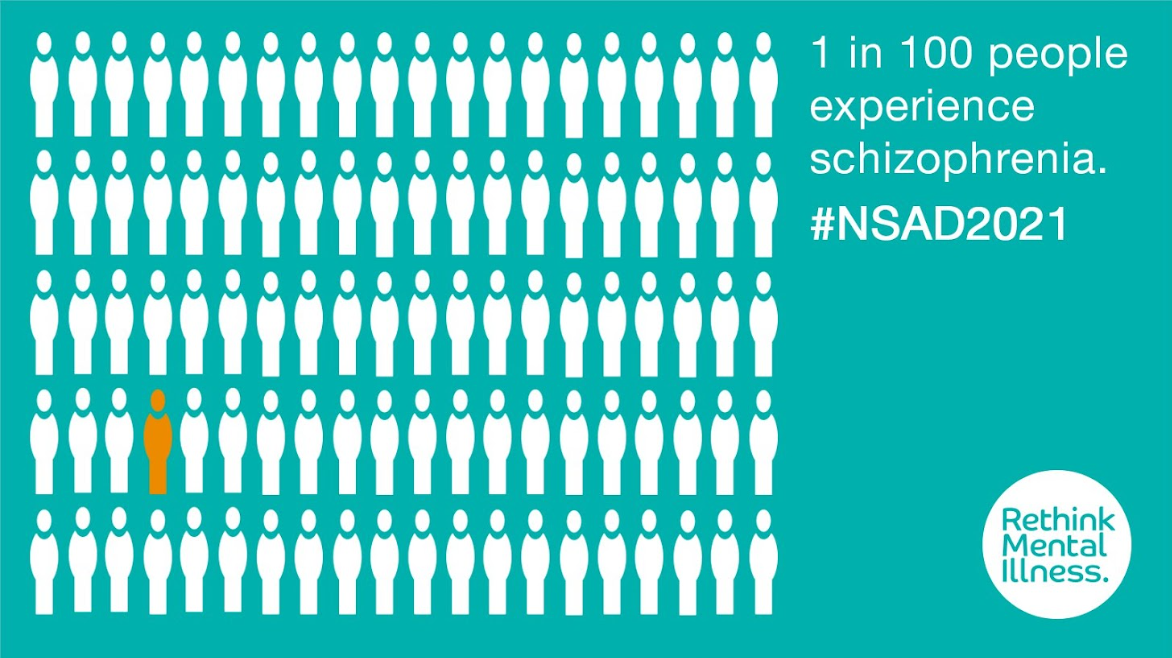Safety is our number one priority. That’s why we’ve created and refined a thorough testing process – ensuring our products are safe, robust and fit for purpose.
By the time our products are used in live environments, they’ve been methodically and rigorously tested in a series of mechanical and abuse scenarios. So our customers can be truly confident in every product and know they’re safe, robust, and easy to use.
Leading much of the testing at Safehinge Primera is Product Designer, Jeremy Young, who explains how we apply our engineering-led approach to create a methodical testing environment.
12 mechanical and abuse tests
As product designers and engineers, we take a methodical engineering-led approach to testing. We favour tests which support analytical analysis and which are repeatable – selecting the most appropriate tests to simulate the real-world environment.
Our testing methodology covers 12 mechanical and abuse tests, plus fire and acoustics – while current industry guidance focuses only on two or three tests. Our 12 tests are split into four categories, taking best practise from each to ensure our doorsets are safe and robust:
- European Standards (superseding DD171) testing
- Department of Health testing
- TS001 (anti-ligature) testing
- Internal Mental Health abuse testing
Where the standing standards overlap, we perform both but prefer more measurable tests. For example, to simulate heavy body impact, the Department of Health Medium Secure Unit test is to carry out a sustained attacked with a rubber paving maul, while the European Standard (EN949) calls for a sandbag setup in a pendulum motion to simulate this – which can be setup the same every time. The European Standard is more repeatable – providing better analysis potential.
In addition to many of the common tests, like static torsion, vertical load and anti-ligature, we have developed a set of internal Mental Health abuse tests – to test other real-world scenarios not covered by the existing standards. One of these is the leg press test, which puts pressure on an anti-barricade stop – simulating a service user attempting to barricade themselves in. Push button stops and some hinged stops are particularly susceptible to this risk.

Testing feedback loop
We have a permanent onsite testing rig at our Glasgow HQ, which has been designed to European and Department of Health guidelines.
This rig speeds up prototyping because we can identify and fix design limitations faster – resulting in quicker product development and minimising issues onsite. Our testing feeds straight into our design and prototyping methodology, informing and enhancing our product design.
For example, the European Standard on resistance to soft and heavy body impact tests up to 180J (joules) of energy, but our analysis showed that most failures occurred at forces between 200 and 400J. As such, we improved the robustness of our products and test up to 400J.
Bespoke testing for clients
We video all of the testing and present that evidence on our website, to clients and organisations researching best practise in testing regimes. The result? Clients can have complete confidence in our products.
South Essex Partnership NHS Trust:"The SWIFTfit frames and Symphony Doorsets provide a robust platform which have proved resilient and confidence inspiring."
Sussex Partnership NHS Trust:
"Our own rigorous testing, as well as Safehinge Primera’s own test evidence, gave us complete confidence in the durability and usability of the product."
Birmingham and Solihull Mental Health NHS Foundation Trust:
"Symphony is a clever design and eliminates many issues...it's durable, safe and secure...we love the modern, non-institutional aesthetics...it looks clean and creates a much more pleasant environment...it's a good solution that really works."
In some cases, we perform tests on request from clients who want to verify a particular doorset configuration for major projects and we’re always happy to oblige.
Creating a set of national standards
We’re so passionate about testing that, as member of the Design in Mental Health Network board, Philip Ross our co-founder, is taking the lead on testing and accreditation at the network. He aims to create a national set of standards that all Mental Health manufacturers can use. These will be based around the in-depth testing we already carry out.

This move would prevent the current situation where every organisation insists on different testing regimes, which creates cost. This, in turn, inflates the price of products, delays decision-making, and restricts product innovation.
Having a set of national standards will enable organisations to make decisions on the best products in the shortest period of time. It also enables them to better compare products and spend more time choosing those that will help the most in terms of creating an environment for recovery.





